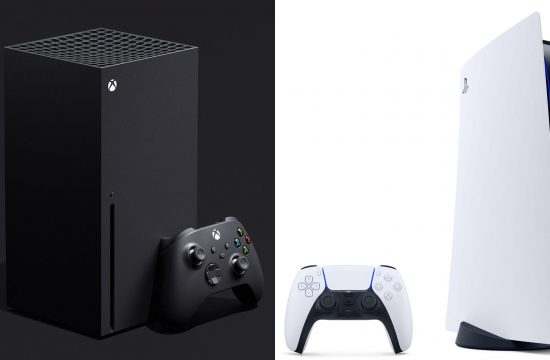Kellogg’s (K) share price slumped following third-quarter results. Organic sales growth was just 0.4%, as a 1.9% increase in volume was offset by a 1.5% hit from lower prices and unfavorable mix. The adjusted operating margin retreated 150 basis points to 13.6%. Not only is Kellogg battling the same commodity and logistics inflation as its peers, but also it saw a high-single-digit uptick in brand-building investments in the quarter, which we view as supporting its entrenched retail relationships despite the near-term erosion in profits.
Management attributed further cost pressures to the increase in sales of single-serve packs, which ultimately necessitated the use of third-party copackers, as it failed to maintain sufficient capacity to meet demand; this issue is likely to linger over the next couple of quarters. While this isn’t favorable as it pertains to the company’s margin profile, we view the outsize demand trajectory as indicative of Kellogg’s efforts to more effectively align its mix with consumer trends, and thus it is a modest positive.
In light of its performance through the first nine months of the year, Kellogg now expects full-year sales at the high end of its prior guidance (4%-5% growth). However, it believes heightened costs will persist and lowered its earnings growth expectation to 7%-8%, from 11%-13% most recently and 9%-11% initially. Even after accounting for year-to-date results, we don’t intend to materially alter our $81 fair value estimate, which incorporates around 3% annual sales growth and operating margins ticking up to 19% by fiscal 2027. We recommend giving wide-moat Kellogg a look as it trades about 20% below our fair value estimate and offers an annual dividend yield above 3%.
From a geographic perspective, Kellogg’s sales in North America (around two thirds of its consolidated base) remained a tad sluggish, down 1.8% on an organic basis. However, this quarter still included a bit of noise following the transition to direct distribution, reflecting stock-keeping unit rationalization and lower list prices, as well as the recall of Honey Smacks this past summer and lapping increased shipments during last year’s active hurricane season. We still believe that Kellogg’s decision to transition completely to a warehouse model from direct store distribution has been a prudent way to free up resources to invest further behind its brands in terms of innovation, marketing, and new packaging.
Unlike other packaged food companies, management’s rhetoric suggests to us that Kellogg is attempting to reignite sales even at the risk of constraining near-term profits, with the ultimate goal of sustainable, profitable top- and bottom-line improvement long term. As a result, we don’t believe Kellogg will ratchet back its spending on its brands; we expect it to direct 8% of sales, or $1.2 billion, to research, development, and marketing annually. We think more effective brand spending should enable Kellogg to better weather competitive pressures–from other branded operators, small niche peers (which have proved more agile in responding to evolving consumer trends), and lower-price private-label offerings–and ultimately support the brand intangible asset that underlies its competitive edge.
Moat Has Widened
We raised our economic moat rating to wide from narrow to reflect our greater confidence in Kellogg’s ability to generate returns above its cost of capital (even under a more bearish set of assumptions) over the next two decades, stemming from intangible assets and a cost edge. We think its position as a leading packaged food manufacturer and arsenal of resources have afforded Kellogg the ability to maintain valuable shelf space for its offerings, even in the cereal aisle, where challenges include the onslaught of competition resulting from lower-priced private-label fare, other branded operators, and the encroachment of smaller foes from within the category and other breakfast alternatives. We see little to suggest this competition will subside, but we think the strength of Kellogg’s relationships with its retail partners should ultimately ensure its edge persists longer term.
Further, we don’t think its prowess is merely sourced by intangible assets; rather, we believe Kellogg also maintains a cost edge resulting from the economies of scale in production and distribution across its global distribution network, which has allowed it to invest significant resources behind research, development, and advertising. We think this competitive advantage should result in excess economic profits, with returns on invested capital (including goodwill) averaging in the midteens over our explicit forecast, exceeding our 7% weighted average cost of capital for at least the next 20 years.
Kellogg’s position as a leader in the U.S. cereal aisle (it holds more than one third share in domestic ready-to-eat cereal) combined with its efforts to bolster its position in the on-trend snacking category (which now accounts for more than half of total sales, up from just one fourth at the start of the century) makes it a valued partner for retailers. The company boasts five brands that generate more than $1 billion in annual sales (Keebler, Pringles, Cheez-It, Frosted Flakes, and Special K) and another five that generate sales of $500 million-$1 billion each year (Eggo, Pop-Tarts, Corn Flakes, Rice Krispies, and Nutri-Grain) that help drive traffic into retail outlets. In our view, this position is enhanced by the resources Kellogg maintains to invest in new product launches (around 1%-1.5% of sales, or nearly $200 million, on research and development annually) and tout those offerings in front of consumers (around 6% of sales, or almost $800 million, each year) to drive customer traffic into stores–bolstering the stickiness of its retailer relationships, a pillar of its brand intangible asset moat source. We think its more effective brand spending should enable Kellogg to better weather competitive pressures and uphold strong positions in its categories over the long term.
We also believe Kellogg possesses a cost edge resulting from its expansive global distribution network. Becoming an entrenched part of retailers’ supply chain can create a virtuous cycle. Scale affords manufacturers a mutually beneficial relationship with retailers in which the vendor is an important retail partner, developing sales strategies to maximize volume and retailers’ margins while prioritizing its own brands. With its broad domestic manufacturing and distribution network, we think Kellogg operates with lower unit and distribution costs, as well as greater supply chain efficiency and an enhanced ability to leverage brand spending, than smaller peers. Further, we think that as a result of these cost advantages, Kellogg maintains the ability to replicate competitive products and ultimately offer this fare to retailers at a lower cost. This stands to limit the potential shelf space and scale that new entrants can amass. We believe it is this self-reinforcing combination of sources of its competitive edge that has created high barriers to entry, shielding vendors like Kellogg that are entrenched in retailers’ supply chains.
Kellogg has generated returns on invested capital (including goodwill) of 14% on average, double our 7% cost of capital estimate, over the past 10 years (never falling below 9%). We expect this performance to continue and project a similar level of returns each year on average over the next five years.
Erin Lash, CFA does not own shares in any of the securities mentioned above. Find out about Morningstar’s editorial policies.








